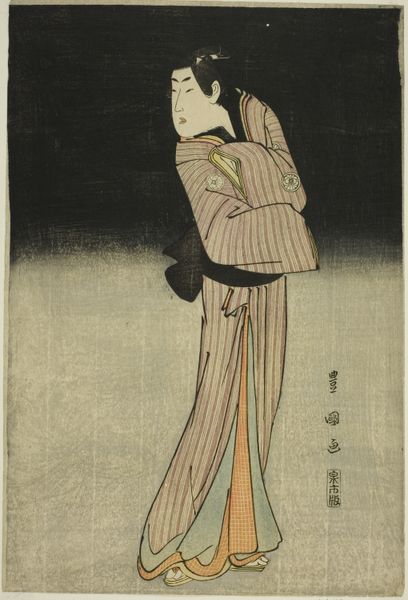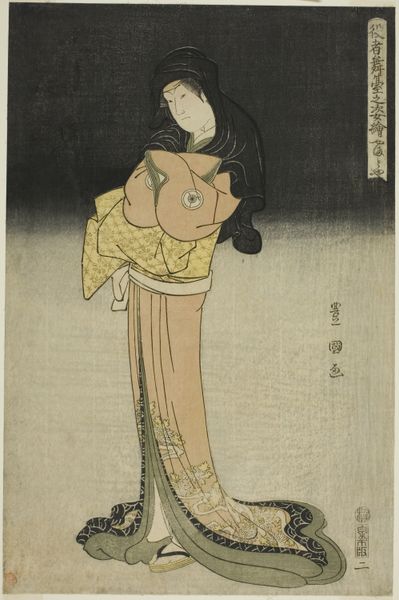
Young Man and Boy Returning from Fishing c. 1767 - 1768
0:00
0:00
painting, print, ink
#
portrait
#
water colours
#
ink painting
#
painting
# print
#
asian-art
#
ukiyo-e
#
ink
#
genre-painting
Copyright: Public Domain
Curator: Here we have "Young Man and Boy Returning from Fishing" by Suzuki Harunobu, created around 1767 to 1768. It resides here at the Art Institute of Chicago. Editor: It feels very intimate. There's a tenderness to the relationship between the figures. It is a bit sparse, with so much ground but I see that emphasizes their connection. Curator: It is sparse. What's fascinating about Harunobu's prints, which were often ink and water colours, is the way he streamlined the traditional Ukiyo-e process. Notice the simplified color palette and how he achieved a sense of depth using very subtle shading techniques on the paper itself. The flat planes emphasize shape rather than volume. Editor: Ukiyo-e, meaning "pictures of the floating world," often depicted scenes of daily life, pleasure, and the ephemeral beauty of nature. The fish strung on the pole, the water bucket held by the boy… they're symbolic of a successful catch, and by extension, prosperity, perhaps? But more than that, a gentle homeward journey. The simple happiness is clear. Curator: I'm particularly drawn to how Harunobu elevated everyday subject matter to an art form. The paper was specifically sourced for its texture, lending a subtle quality to the overall appearance, creating an alternative to, say, silkscreen techniques. The registration of colors during the printing process required considerable skill. The relationship to labor itself becomes part of the art’s significance. Editor: Absolutely. But the figures themselves, with their delicate features and stylized poses, suggest something deeper. Their downcast eyes and the slope of their shoulders are archetypal, hinting at humility. A larger symbolic connection with nature’s gifts. Curator: And, by focusing on these figures returning from a productive fishing trip, Harunobu indirectly comments on the importance of work and community within the social structure of the Edo period. How daily lives formed an important part of the consumption of woodblock prints. Editor: For me, the image speaks more to a universal longing for a connection to the natural world, regardless of social class. These archetypes endure because of shared feelings of comfort after working on a shared goal and bringing back natural abundance to feed a household. Curator: So, through an exploration of material practices, we find that Ukiyo-e opens dialogue about consumer culture and craftsmanship. Editor: Indeed. It is about how archetypal relationships still offer deep meanings, revealing echoes across centuries.
Comments
No comments
Be the first to comment and join the conversation on the ultimate creative platform.













